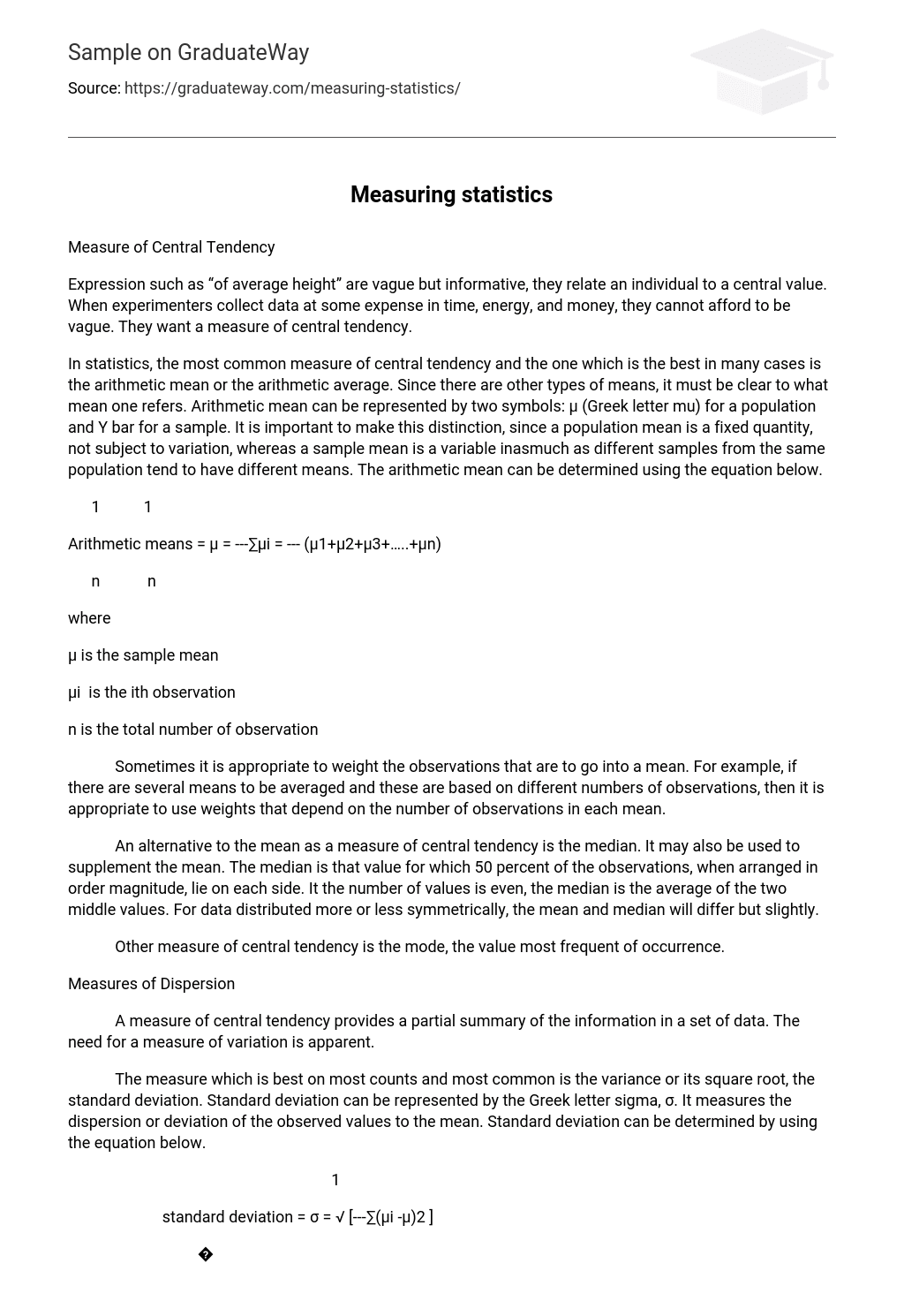Expression such as “of average height” are vague but informative, they relate an individual to a central value. When experimenters collect data at some expense in time, energy, and money, they cannot afford to be vague. They want a measure of central tendency.
In statistics, the most common measure of central tendency and the one which is the best in many cases is the arithmetic mean or the arithmetic average. Since there are other types of means, it must be clear to what mean one refers. Arithmetic mean can be represented by two symbols: μ (Greek letter mu) for a population and Y bar for a sample. It is important to make this distinction, since a population mean is a fixed quantity, not subject to variation, whereas a sample mean is a variable inasmuch as different samples from the same population tend to have different means. The arithmetic mean can be determined using the equation below.
Arithmetic means = μ = —∑μi = — (μ1+μ2+μ3+…..+μn)
where
μ is the sample mean
μi is the ith observation
n is the total number of observation
Sometimes it is appropriate to weight the observations that are to go into a mean. For example, if there are several means to be averaged and these are based on different numbers of observations, then it is appropriate to use weights that depend on the number of observations in each mean.
An alternative to the mean as a measure of central tendency is the median. It may also be used to supplement the mean. The median is that value for which 50 percent of the observations, when arranged in order magnitude, lie on each side. It the number of values is even, the median is the average of the two middle values. For data distributed more or less symmetrically, the mean and median will differ but slightly.
A measure of central tendency provides a partial summary of the information in a set of data. The need for a measure of variation is apparent.
The measure which is best on most counts and most common is the variance or its square root, the standard deviation. Standard deviation can be represented by the Greek letter sigma, σ. It measures the dispersion or deviation of the observed values to the mean. Standard deviation can be determined by using the equation below.
standard deviation = σ = √ [—∑(μi -μ)2 ]
where
σ is the standard deviation
μ is the sample mean
μi is the ith observation
n is the total number of observation
Another measure of dispersion is the range. It is the difference between the highest and the lowest value. It is not ordinarily a satisfactory statistics for a critical evaluation of data since it is influenced by extreme or unusual values. However, for sample of size 2, it is a multiple of the standard deviation; and for samples of less than ten, it is often satisfactory. Under some conditions, techniques using the range are especially desirable.
When creating a graph using an excel program, the first thing to do is to encode the dependent and independent values or the X and Y values. The X values must be on the same column as well with the Y values. After this, you can now create a chart by pressing the Insert – Chart from the menubar. After this, you can choose what type of chart you want to employ. When choosing the type of chart, it is better to determine what kind of data you have as well the purpose in presenting data through a graph or chart. Just choose the most appropriate one. Just follow the step by using the dialog box until excel will construct your graph automatically. The user can modify the graph if there are some unnecessary elements or sometimes missing values.
References
- Goulden, C.H.: Methods of statistical analysis, 2ed., Wisley, New York, 1952.





